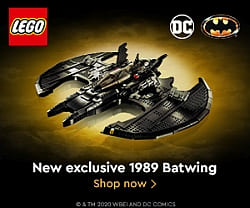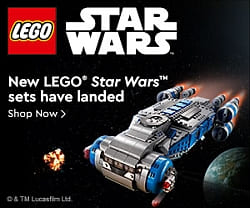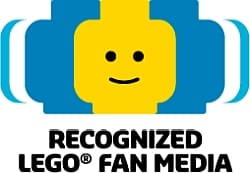by Thita (admin)
on September 5, 2013
(Written by Chi-bacca)
Welcome to Part 2 of the little series I’m doing where I share an experiment of giving myself a LEGO building challenge using limited LEGO parts and time (you can read Part 1 here: The LEGO MOC Challenge – Part 1). This time I’m using elements from the #2192 LEGO Hero Factory Drilldozer and #2194 LEGO Hero Factory Nitroblast sets to create two villains to fight the heroes I shared with you in Part 1. The time-limit I set myself for this challenge was 20 minutes, which includes taking pictures. So let’s see what we got this time! 🙂
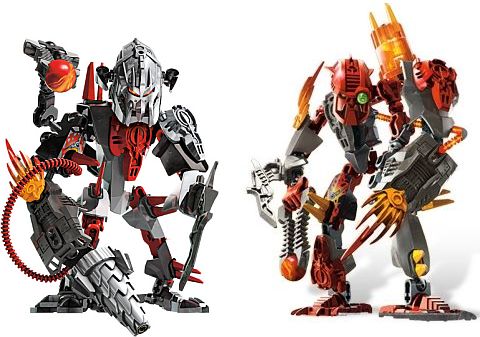
The first of the villains is called Ember. I mixed the building techniques used in the two above mentioned LEGO Hero Factory sets. He is equipped with both a blaster and a razor-sharp saw-blade. He is heavily armored, but his saw-arm is actually quite mobile due to the numerous small joints.
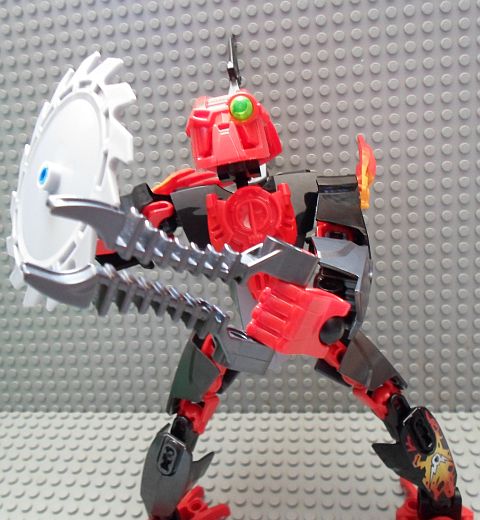
The second villain is called Iron Giant. He is not considered a giant compared to the heroes, but his friends call him that anyway. He has industrial-strength armor on almost every part of his body, which makes him a very tough foe. However his armor-plating also limits the mobility of his arms – which is his weakness. His odd colored blue hand was stolen from a hero, after his was cut off in a previous battle. (And due to the fact that between the two sets I used for this challenge there was only one hand included, so I had to improvise.) 🙄
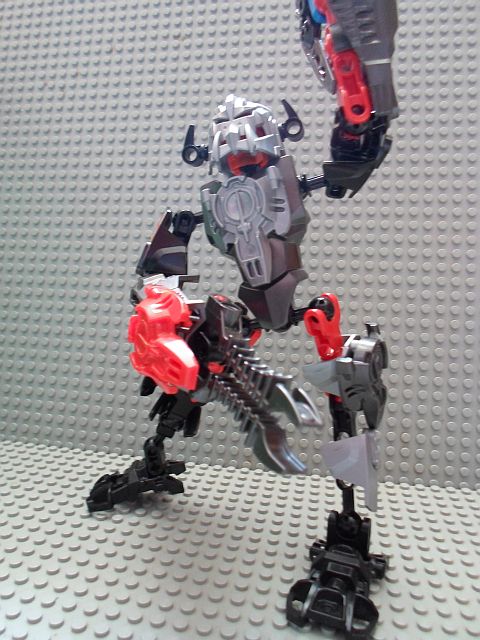
I have been having lots of fun with this challenge, and I would recommend you try something like this too. It helps with developing your LEGO building-skills as well as engaging your creativity. If you would like to build your own custom LEGO Hero Factory characters you can check out the Online LEGO Shop for currently available Hero Factory sets.

So what do you think? How do you like the LEGO challenge idea and my custom hero figures? Would you like to try the challenge yourself? What would you build? Let me know in the comment section below! Also, I’m a TFOL (Teen-Fan-of-LEGO) and this is my third article here. You can check out my previous posts below. Thanks for reading! 😉
{ }
by Thita (admin)
on September 4, 2013
LEGO customizer BrickForge came out with some really nice printed elements I thought to share with you today. BrickForge is one of the most prominent LEGO customizers with a huge range of accessories for your LEGO minifigs in a wide variety of colors and styles. Today I would like to show you BrickForge’s new custom LEGO S.T.A.R. Patrol line of accessories.
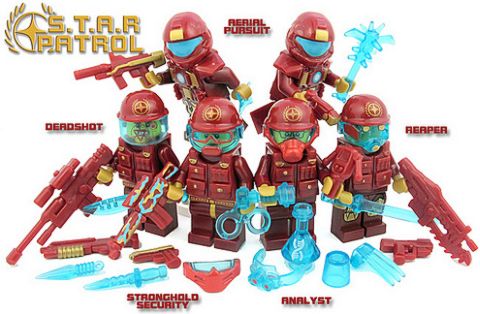
S.T.A.R. Patrol is a galactic team comprised of six different characters – or Super Soldiers – whose mission it is to protect key areas of the Solar System. Here is what BrickForge customizer Armothe says about the theme: “S.T.A.R. Patrol is reminiscent of the early 80′s toy themes; I’m also a fan of the new STAR Citizen Kickstarter campaign. I was shooting for a ‘Red Planet’ type concept where the characters needed some sort of Hydro-Cooling tank on their backs to survive the dry, arid temperatures of their base planet. The Dark-Red, Gold & Trans-Light-Blue color-scheme really made sense.”
In case you are not familiar with Star Citizen, it is an upcoming and super exciting PC space-simulator being developed by Roberts Space Industries and was crowd-funded through a Kickstarter campaign. It will feature an online multiplayer as well as a single-player story. Here is a video with a bit more explanation:
BrickForge’s accessories are perfect for equipping your Galactic Soldiers – both those that are based on video-games, movies and LEGO themes (in fact they also have a really nice assortment of printed accessories for the LEGO Alien Conquest line), and those that you imagine yourself.
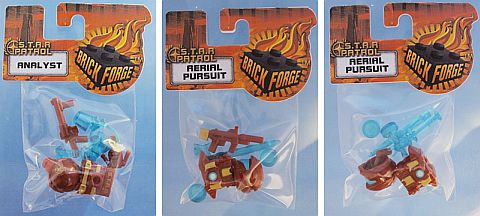
What I like about the S.T.A.R. Patrol custom LEGO accessories is that you can create a whole team of soldiers with matching equipment and armor, yet also provide a nice variety amongst them. In otherwords you can build an awesome team of heroes! I also like the dark-red with the gold printing, which (as you see in the first picture) is a perfect match for the LEGO Iron Man minifigures, so you can easily transform your Iron Man minifigs into Galactic Soldiers.
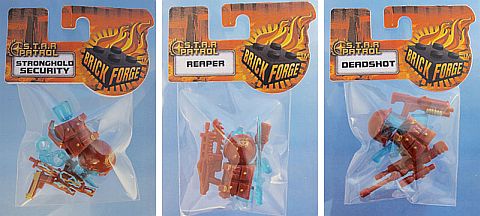
All of the S.T.A.R. Patrol Character Packs are currently available at BrickForge’s Online Shop under the Accessory Packs section, as well as though authorized resellers. You can even buy the Squad Assortment and get a discount (basically buy 5 packs and get one free). And of course you can also check out many of their other accessories.
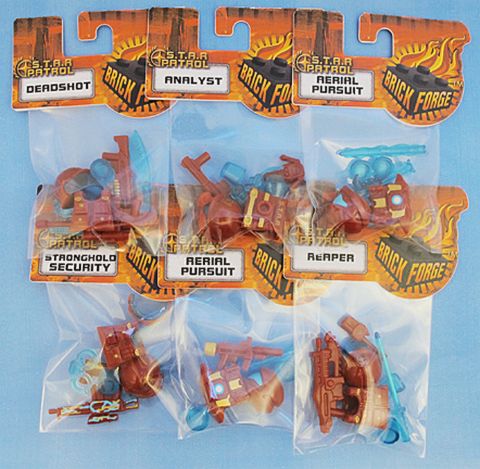
So what do you think? How do you like the BrickForge S.T.A.R. Patrol concept? And what do you think of their printed accessories? Feel free to share your thoughts in the comment section below!
And you might also like to check out the following related posts:
{ }
















